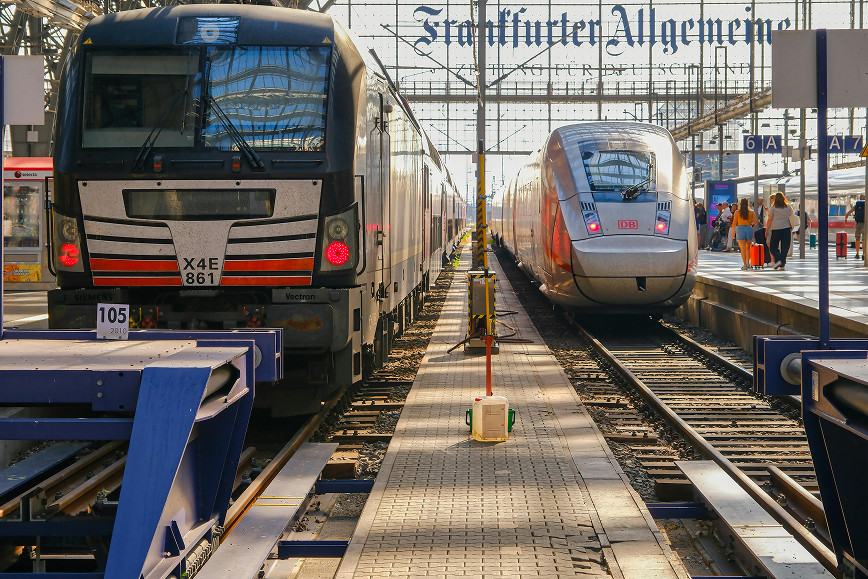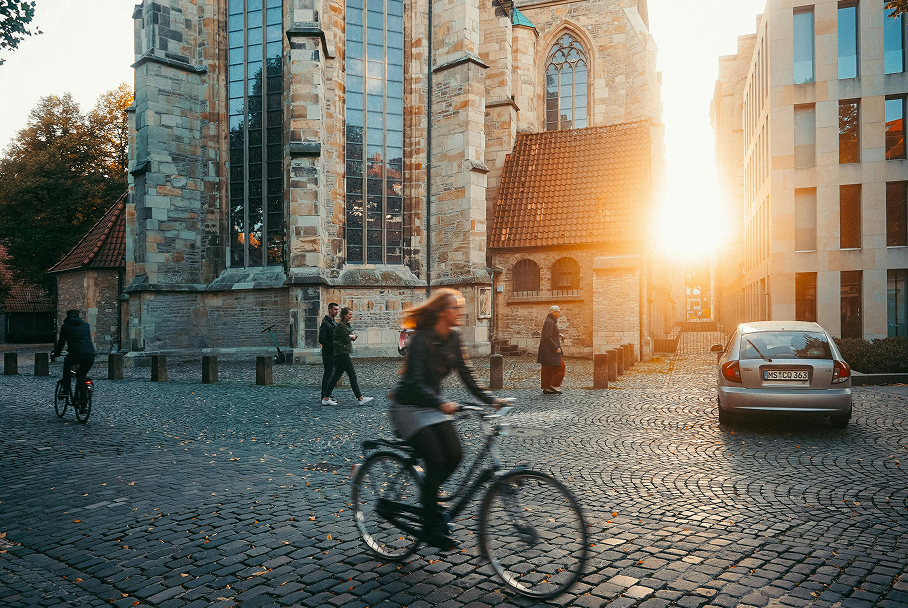Index
Receive our newsletter
Frankfurt has a well-organized transportation network designed to cover both short urban trips and regional journeys. As one of Europe’s leading financial hubs, the city attracts international professionals and a large student population that relies on efficient mobility every day. That’s why understanding how the S-Bahn, U-Bahn, and monthly passes work makes a real difference from day one.
S-Bahn and U-Bahn
Frankfurt’s daily mobility depends heavily on two systems. The S-Bahn functions as a suburban rail service connecting the city with the airport, neighboring towns, and key points across the broader Rhein-Main metropolitan area. Its lines cover long distances and pass directly through the center, stopping at major hubs such as Hauptbahnhof, Hauptwache, and Konstablerwache. Thanks to this setup, travelers can reach the city center from the airport in under 15 minutes or get to Offenbach, Wiesbaden, or Mainz with little effort.
The U-Bahn, meanwhile, focuses on urban travel. Although many refer to it as the metro, the network combines underground sections with surface-level routes. Lines U1, U2, U3, and U8 run through residential districts in the north, while U4 and U5 connect central areas. The U7 crosses the city from east to west. Its high frequency, especially during peak hours, makes it the most convenient option for getting around neighborhoods like Bockenheim, Bornheim, Sachsenhausen, or Nordend.
One major advantage is the strong interconnection between both systems. Many stations serve as shared transfer points, allowing passengers to switch quickly between S-Bahn and U-Bahn lines. Hauptwache is a popular reference among locals, since S-Bahn, U-Bahn, and several tram routes all intersect there.
RMV fares and zones
The entire region operates under the Rhein-Main-Verkehrsverbund (RMV), the authority responsible for fares and zones. Although it may look confusing at first, the logic is straightforward: each trip has a set price based on distance and the areas crossed. Most journeys within Frankfurt fall under a single zone, so the fare remains stable regardless of the chosen mode of transport. Standard city tickets usually range from €3.10 to €3.40, while rides to nearby towns may cost €5 to €7.
Tickets can be purchased from station machines, the RMV app, or authorized vendors. Most S-Bahn and U-Bahn lines do not require physical validation, as the system relies on random inspections. Even so, keeping your ticket or pass accessible helps avoid fines during checks.
Occasional riders often choose single tickets. A 24-hour ticket, usually €6.50 to €7.20 for one zone, works well for visitors planning to explore multiple attractions in a day. Small groups or families can opt for the Gruppentageskarte, valid for up to five people, typically priced around €11-12.
Monthly passes
People staying longer in Frankfurt often rely on a monthly pass. The most common option is the Monatskarte, which allows unlimited travel within the selected zones. It is especially convenient for employees, students, and newcomers who follow a stable daily routine.
Another widely used product is the Deutschlandticket, a nationwide monthly pass that grants unlimited access to all regional transportation across Germany for €49. It’s ideal for commuters heading to nearby cities or travelers who want to explore the country without buying extra tickets. The pass can be purchased through the RMV app or via subscription, which renews automatically unless canceled. If you want to learn how transportation works in another RMV city, take a look at our guide “Getting around Darmstadt: transportation, cycling, and travel passes”.
Students enrolled at German universities usually receive a Semesterticket, included in their semester fees. This pass covers a wide area and provides unlimited travel for several months, significantly reducing mobility expenses.
Getting around Frankfurt like a local
Navigating Frankfurt’s stations might feel overwhelming at first, especially in large hubs like Hauptbahnhof. However, the signage is clear and easy to follow. Green symbols indicate S-Bahn routes; blue ones represent the U-Bahn, and large numbers highlight each line, making it simple to find the right platform quickly.
Trams are also very useful, particularly for short trips. Many areas are easier to reach by tram than by metro, and stops often sit directly next to shops, museums, administrative buildings, and shopping streets.
Rush hours, typically between 7:30–9:00 and 16:30–18:00, concentrate the highest passenger volume. On weekends, frequencies tend to decrease but remain reliable enough to cross the city without major delays. To avoid interruptions, apps like DB Navigator, RMV, or Google Maps provide updated schedules, incident alerts, and alternative routes.
Stay, explore, and move without stress
Frankfurt blends history, financial districts, green residential neighborhoods, and a wide range of leisure activities. Accommodation options depend on each traveler’s needs. The Hauptbahnhof area offers excellent connections but tends to be livelier and noisier. Those wanting a calmer setting might prefer Bornheim, Bockenheim, or the riverside area near the Main, known for its cafés, restaurants, and pedestrian-friendly streets.
With a solid, intuitive, and efficient network, Frankfurt makes daily travel easy for residents and newcomers alike. Understanding how the S-Bahn, U-Bahn, and monthly passes work ensures a smoother experience and helps you navigate the city confidently.









